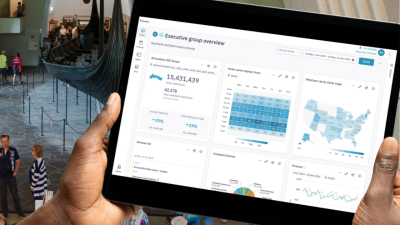I think it’s time to share my omphalic classification scheme for museums.
I started using this metaphor while I was directing AAM’s excellence programs (MAP, Accreditation) to capture my observations about major differences about museums’ organizational culture, behavior and financial structures.
“Innies,” I noticed, are often created by enthusiasts who are sure that other people will appreciate their passion once it is shared in the form of a museum. Classic innies include transportation museums (trains, planes, automobiles), historic houses, and museums focused on particular kinds of stuff (anything from paperweights to individually amassed collections of art). These organizations are often repositories of deep knowledge and expertise, though they vary in their ability to convey that expertise in ways that make the subject interesting to the lay visitor. (I could make a joke here about navel gazing, but I won’t.) Innie museums often struggle to find audience, and funding, broad enough to support their needs.
“Outies” are started by groups or individuals trying to meet a community need through the medium of a museum. Children’s museums, for example, experienced a bump in numbers starting in the 1970s as groups such as the Junior League founded museums as a way to serve families with young children. Or Project Row Houses in Houston, which was founded on the premise that “art and the community that creates it can revitalize even the most depressed of inner-city neighborhoods, for the mutual good of existing and future residents changes lives.” Outies are sometimes accused of being shallow, of being glorified community centers, or of creating experiences judged second-rate by their colleagues, but often enjoy broad, even passionate, public support.
The most unfortunate hybrids are museums that are founded as innies, but expect to be supported as outies. Take for example, the Taubman Museum of Art in Roanoke, Va., whose founder gave enough to establish, but not run the museum, and which now struggles to bridge the gap between what a handful of well-off donors are willing to provide, and the public support they would need to be sustainable. At least according to this article.
I’m beginning to think that innie/outie orientation is even more deeply embedded in museum psyche than I had realized, and more critical to the future of our profession. I’m going to explore implications of this theory over the next few months on this Blog, but for now I’d like to share some half-baked ideas on how the omphalic divide is shaping the national discourse about public support for museums.
Since CFM tagged the erosion of non-profit status as a major trend shaping the future of museums in TrendsWatch 2012, the political and financial situation for American nonprofits has only gotten worse. Current proposed state budget cuts total $122 billion in 44 states and the District of Columbia. California alone faces a $16 billion shortfall this year, and is grappling with whether to raise taxes or reduce support to education and public safety on top of the existing “teacher layoffs, college tuition hikes, fewer medical benefits for the poor and elderly, and reduced child support programs for low-income mothers.”
If states are unable to meet needs so basic on Maslow’s hierarchy of needs, what hope do museums have for state funding, or indeed, the support of state tax-exempt status? And the prospects for federal funding are not much brighter. The Congressional report explaining the current House-proposed budget characterizes museum funding through IMLS as “not a core Federal responsibility” and funding for NEH and NEA as (hold onto your hat) a “wealth transfer from poorer to wealthier citizens.” We live in a time when the tax-exempt status of hospitals, educational and cultural institutions may be re-examined by policy makers and by the courts.
Right now we tend to see the major divisions in the museum field as being between disciplines (art, science, history, children’s, natural history, zoological, botanical etc.), budget size (large or small), or governance (private nonprofit, municipal/state, university/college). I can envision a bifurcated future in which the most important division is between tax-exempt museums—outies that meet community needs in a museum-y way—and innies that exist with support from the specific audiences they serve, without the benefit of the “wealth transfer” provided by nonprofit status.
Self-sufficient innies may be supported by the largess of individuals who can afford to implement their individual visions without public support. (See, for example, the Museum of Old and New Art in Tasmania, which is privately owned and funded by billionaire David Walsh, underpinned by the lucrative winery, brewery, restaurant and hotel he runs on the same site.) Innie museums might also arise through the collaboration of groups that are willing to forgo nonprofit status and its attendant burdens of transparency and nonprofit governance (c.f. the International Spy Museum). Or they may seek a little bit of the best of both worlds, becoming social benefit corporations—L3Cs—with explicit social missions, qualifying from funding from charitable foundations, but also attracting the support of investors seeking to do good as well as make money.
Looked at another way, the public realm may increasingly focus on supporting “stuff” (collections, programs) that fills a basic public need that might otherwise not be served, while leaving the market to care for collections and deliver programs that can exist without public support. A state, for example, might choose to maintain a natural history collection that supports research and decision-making necessary for public health, resource and long-term environmental management, while trusting that individual owners will acquire, preserve and (on occasion) display art.
I’m not saying this is a good future or bad future, just that its one future that falls within the cone of plausibility. It’s up to you to decide how likely this future is, and whether you want to try to head it off. Well? Weigh in below…
(And, BTW, let me know where your museum falls on the belly button spectrum…)









My museum was started as an Outie when a group of community members rallied together to create a community historical society and then networked for decades to make it go. Somewhere along the way, it became at Innie- the core group of active sustainers aged and the museum became a sort of clubhouse for a specific demographic. Even the exhibits started to reflect the idea that if you haven't lived here since 1941, then the museum wasn't truly for you. My number one goal as a new director is to return the museum to a position farther down the Outie spectrum. I would love to share our mission with so many groups and in so many ways that we are accused of being a glorified community center!
favorite new word of the day: omphalic!
Posted on behalf of
Steve Friesen, Director
Buffalo Bill Museum, City and County of Denver:
The most successful museums are those which are able to create a balance between being "Innies" and "Outies". I have no love for the overwhelmingly Outie museum which sometimes acts as a glorified playground nor for the overwhelmingly Innie museum which becomes so elitist as to be irrelevant. But it is possible to combine scholarship, storytelling, curatorial excellence, artifacts and interactives to create a truly edifying immersive experience. It's just that a lot of museums are failing at this task.